One of the most groundbreaking innovations in this year’s iPhone 14 lineup is something you’ll hopefully never have to use: the ability to summon help in remote areas by connecting to satellites instead of relying on traditional cellular networks.
Although the new Eemergency SOS via satellite feature won’t be switched on until later this year, this is likely to be only the first step in Apple’s plans for an even more connected world.
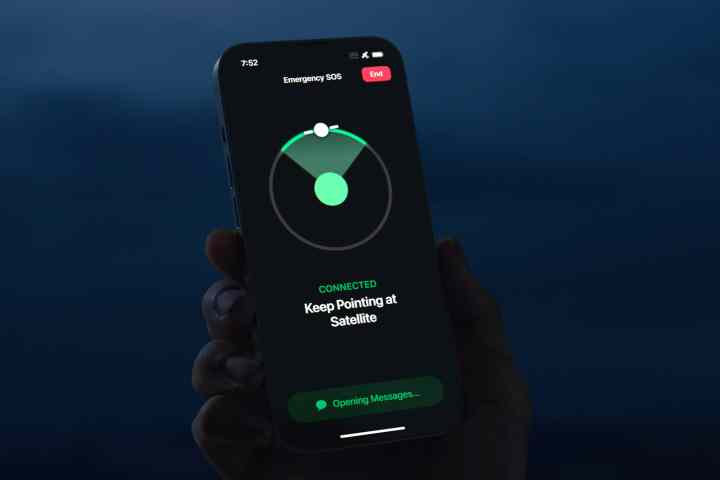
Wireless technology companies like Qualcomm and Ericsson have been working on ways to deliver 5G connectivity via satellite for a while, and T-Mobile has partnered with SpaceX to eventually bring an end to cellular dead zones. Still, it seems that Apple has beaten them all to the punch — and it may have even more exciting ideas in mind. Apple’s deep pockets and the tight control it exercises over hardware and software allow it to build complete solutions like this one more quickly than its competitors. It also helps that the iPhone maker is willing to start small.
It’s typical of Apple’s playbook to introduce new features in small and practical ways and build from there. The original iPhone didn’t do nearly as much as its competitors, but it did a few things very well. Similarly, this year’s Apple Watch Series 8 adds a temperature sensor with the relatively narrow and specific purpose of tracking women’s menstrual cycles, but it’s not hard to imagine that future WatchOS updates and Apple Watch models will eventually find other ways to use this sensor.
Apple is likely following the same strategy with the new Emergency SOS via satellite feature, dipping its toes into the waters of satellite connectivity with a very useful feature that doesn’t put too much of a strain on the company’s resources or set unrealistically high customer expectations.
Apple has launched its own satellite constellation
Perhaps the most significant indication that Apple is serious about satellite connectivity is how much it’s invested to deliver what currently amounts to an emergency SOS feature.
When Apple unveiled the iPhone 14 lineup earlier this month, it didn’t say much about what satellites the emergency SOS feature would be using. Many assumed Apple was renting space on an existing low-earth orbit (LEO) constellation such as the well-known Iridium network.
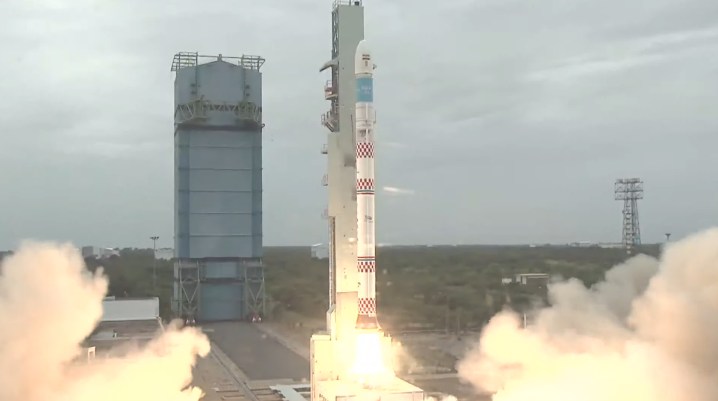
However, it turns out that Apple is effectively launching its own satellite constellation to power this feature — and spending a whopping $450 million to do it.
An Apple spokesperson told Reuters that it has selected Globalstar as its partner to deploy the satellite infrastructure, with Apple covering 95% of the costs of building and launching the new satellites necessary to support satellite connectivity on the iPhone 14.
This isn’t something Apple is doing on a whim, either. It’s been years in the making. In 2017, Apple hired away two satellite engineers from Google parent company Alphabet, and by late 2019, Bloomberg’s Mark Gurman revealed that Apple had ramped up the hiring of aerospace, satellite, and antenna design engineers, with the aim of deploying its first satellites within five years.
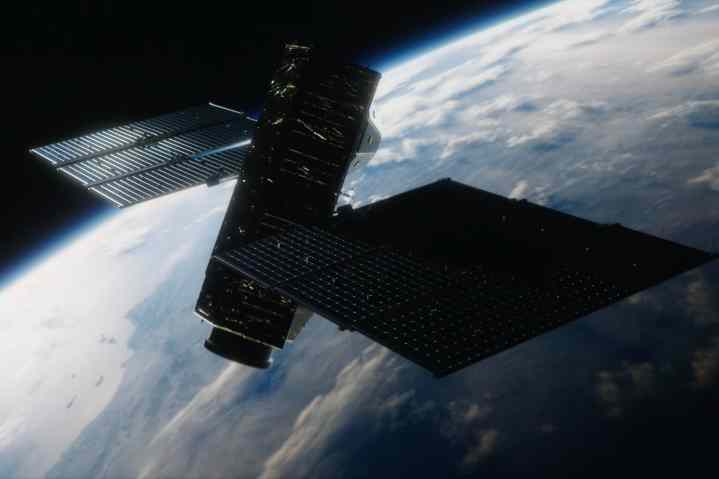
Nobody was entirely sure what Apple was up to at the time. Some speculated that Apple would launch its own satellite constellation. Others felt the company would take the more conservative approach of tying into existing satellite networks or possibly partnering with a big satellite maker like Northrop Grumman, Lockheed Martin, or Boeing to piggyback its communication systems on existing satellites.
Considering how much Apple likes to control all the aspects of any solution it develops, it’s not surprising that the company has opted to deploy its own satellites. However, it seems unlikely that Apple is spending this kind of money solely to power an emergency SOS feature that, while valuable, will hopefully be rarely used.
Nevertheless, Emergency SOS via satellite is an ideal way for Apple to roll out and test its satellite network without putting too much demand on it. Apple has also added satellite location reporting for the Find My network, which allows iPhone 14 owners to try the feature out even when they’re not in dire straits.
The future of iPhone satellite connectivity
It’s highly likely Apple has much bigger plans for its satellite constellation and that this is simply the first stage.

While Apple doesn’t typically iterate and test new things in the public eye, getting real-world experience with iPhone satellite communications in a lab is pretty difficult. So, Apple is taking baby steps with smaller features that will allow it to study and slowly overcome some of the challenges inherent in satellite communications – and there’s no shortage of challenges to overcome.
Modern sci-fi movies have led folks to believe that satellite communications should be quick and easy, but nothing could be further from the truth. As Apple’s Kaiann Drance explained during the iPhone 14 launch event, “connecting to satellite presents an entirely new set of challenges” for the iPhone.
Communication satellites are hundreds of miles above the earth, moving thousands of miles per hour. While we don’t have any specs on the Apple/Globalstar satellites, the Iridium constellation comprises 66 satellites orbiting at 485 miles above Earth at 17,000 miles per hour.
To put that in perspective, cellular service runs over distances of less than 10 miles away from the nearest tower.
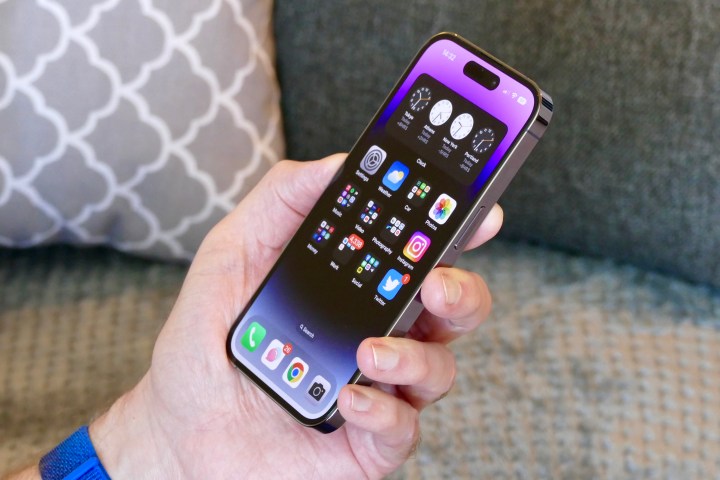
Due to the distances and speeds involved, “the bandwidth is so limited that even sending a text message is a technical challenge,” Drance added. “Typically, the only way to tap into such a network is with an expensive device that uses a bulky external antenna.”
Since there was no way Apple would put a massive antenna on the iPhone 14, it put its best engineers to work on building custom components and specific software to help users lock on to a satellite signal. This requires line of sight to a satellite that the naked eye can’t see, so the iPhone software interface has to guide the user through holding up their device and aiming it in the right direction.
As things stand today, the iPhone 14 isn’t ready to handle a full-service text, data, and voice service via satellite. Bandwidth constraints mean that a single short text message can take 15 seconds to send even under ideal conditions, and in some cases, that can be as long as two or three minutes. That’s even factoring in the special compression algorithms that Apple designed to shrink text messages down to a third of their normal size.

Using satellites for short emergency messages also alleviates bandwidth concerns. Apple can deploy fewer satellites and not worry about overloading them. Apple could sell as many as 100 million iPhones this year, but relatively few of these will even try to reach out to one of Apple’s satellites, and when they do, they’ll be exchanging only the tiniest pieces of data.
Apple also has to consider battery life. If you think using 5G cellular data drains your battery fast, imagine the power it takes to reach a satellite that’s hundreds of miles in orbit. Nevertheless, it’s not hard to imagine that full satellite connectivity is what Apple is ultimately aiming for.
A recent analysis by Opensignal outlines the reality of global cellular coverage, noting that it’s far from ubiquitous, even in regions of the U.S. that are otherwise known for good cellular availability.

For example, on average, U.S. smartphone users are only without a signal 1.09% of the time. However, those percentages increase significantly in certain areas like Alaska (4.25%), Wyoming (3.98%), Vermont (3.86%), Montana (3.48%), West Virginia (3.44%), Idaho (2.47%), Colorado (2.08%), and Oregon (2.05%).
This won’t come as much of a surprise since these states have vast swaths of picturesque but sparsely populated wilderness. As much as wireless carriers want to provide the best possible coverage to customers, some locations are very costly to reach. There will always be gaps in cellular coverage, and this is where satellite connectivity comes in.
Traditional satellites and 5G networks
There are two different approaches being used in the quest to expand cellular coverage by using satellites. Elon Musk’s SpaceX and its Starlink constellation are attempting to go for the more seamless route of extending mid-band 5G frequencies into space. That’s what its partnership with T-Mobile is all about. The upside is that this would allow standard 5G smartphones to handle basic messaging features without any special hardware, including the iPhone 14 and even older models. However, it also complicates things by tying it to specific carriers and possibly interfering with frequencies used by others.
For example, T-Mobile has a license to the 2.5GHz spectrum that Starlink will use to deliver services in the U.S, but what happens when a T-Mobile customer roams internationally? SpaceX will run into similar problems as it tries to expand this service to other carriers and regions.
The other approach is to use more traditional satellite frequencies, and this is what Apple has done with the iPhone 14 and the satellite constellation it’s deployed in partnership with Globalstar. Reports last year suggested that Apple was planning to adopt 5G satellite connectivity using band 53, but that’s a terrestrial frequency used by Globalstar for private 5G networks; it has nothing to do with satellite communications. Instead, Apple is using the same L band and S band frequencies as most other satellite communication services.
The advantage of this is that Apple doesn’t have to concern itself with tripping over spectrum licensing or carrier interference issues. Since they’re reserved for satellites, these bands don’t touch the normal cellular frequencies. Apple can roll out its satellite services globally on its own terms.
Next steps for the iPhone 14’s satellite connection
One of the most logical next steps for satellite connectivity on the iPhone 14 is using it for sending regular text messages. The good news is that the iPhone 14 already has the hardware necessary to pull off at least basic text messaging via satellite; Apple merely needs to unlock this at a software level.
However, that’s not possible today, and there are no guarantees it will ever happen. The iPhone 14 may be capable of sending standard text messages, but as the technology stands today, it’s not practical for engaging in everyday conversations.
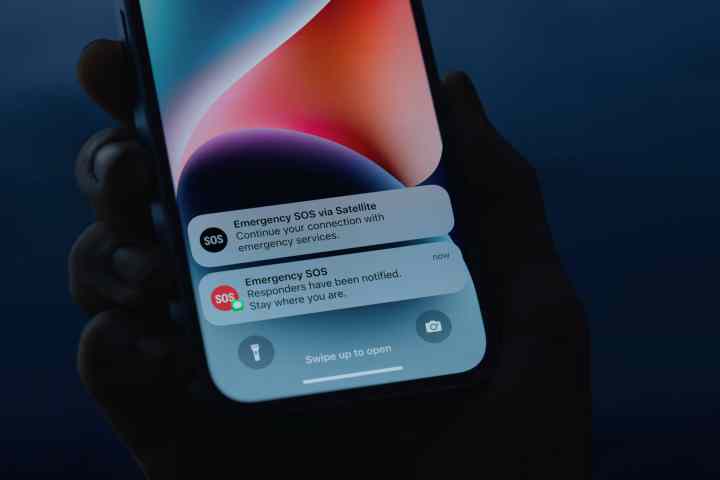
For one thing, sending and receiving texts can be glacially slow compared to traditional cellular networks. It may take two to three minutes to exchange a couple of messages. Plus, you’ll have to lock onto a satellite first.
Still, it would be a nice way to send a quick update to loved ones when you’re out in the wilderness. Apple already plans to let you use a satellite connection to share your location on its Find My network, so adding the ability to send a short message wouldn’t be too much of a stretch.
Even if Apple eventually adds this capability, it could come at a cost. The company has already implied that it might eventually begin charging for Emergency SOS via satellite; iPhone 14 users get it free for two years, but nobody knows what will happen after that.
The cost of increasing satellite features
By comparison, Garmin’s inReach, one of the more popular satellite communication services, charges $15 per month for a basic subscription that includes 10 text messages of 160 characters; after that, customers are billed $0.50 for each additional text message. Garmin’s most expensive “Expedition” plan offers unlimited texts, but that will set you back $65 per month.

With the staggering cost of deploying satellites, Apple’s investors will expect the company to start making money off these advanced communication features eventually. While expanded satellite capabilities seem inevitable, so does Apple turning it into another one of its subscription services with a monthly price tag attached. Garmin also provides weather information, which would be easy for Apple to bundle into a satellite subscription plan, especially considering its 2020 acquisition of Dark Sky.
Charging a subscription for enhanced satellite service isn’t a bad idea when you think about it. Apple will have to recoup its satellite deployment costs somehow, and it’s much fairer for the company to do it by charging folks who will actually use it rather than building it into the price of the iPhone.
This is only the beginning
The vast majority of iPhone owners will likely never stray far enough from cellular coverage to need satellite communications, but many that do would be willing to pay for the service. I’ve spoken to owners of Garmin devices who are already excited about the idea of carrying one less device on their wilderness adventures and would happily pay the same subscription fee to Apple.
The iPhone 14 and Apple’s satellite network may not be ready for that yet, but it’s a safe bet that Apple is working on it.



